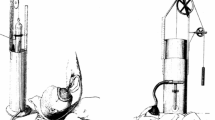Abstract
Uncuffed endotracheal tubes are commonly used in children in an attempt to decrease the potential for pressure induced tracheal injury. However, uncuffed endotracheal tube may increase the risk of aspiration and lead to erratic delivery of preset tidal volume during mechanical ventilation. Therefore, it is desirable to intubate trachea with an appropriate but not an oversized endotracheal tube. In children, for selecting an endotracheal tube, a variety of formulas and techniques are used to find the endotracheal tube size that minimizes both pressure induced tracheal injury and aspiration potential or variable ventilation. Air-leak following tracheal intubation can be recognized by the presence of audible leak, by auscultation over the trachea, by palpation over the trachea and by observing effects of positive end-expiratory pressure on inspiratory expiratory tidal volume difference during mechanical ventilation. We describe mainstream time-capnograph as an aid to recognize leak around the endotracheal tube and its utility to determine appropriate endotracheal tube size in small children.
Similar content being viewed by others
References
Thompson J, Craig N: Monitoring during mechanical ventilation In Capnography Clinical Aspects, Gravenstein JS, Jaffe MB, Paulus DA (Ed), Cambridge University Press, United Kingdom, 2004 pp59–64.
Penlington GN: Endotracheal tube sizes for children. Anaesthesia 1974; 29:494–495.
Cote CJ: Pediatric anesthesia. In Anesthesia, Miller RD (ed), Philadelphia, Churchill-Livingstone, 2000. pp. 2088–2117.
Neema PK, Sinha PK, Manikandan S, Rathod RC: Oversized endotracheal tube in pediatric anesthesia practice––its objective detection. Anesth Analg 2003; 97:1857–1858.
Gravenstein JS, Jaffe MB, Paulus DA: Clinical perspectives In Capnography Clinical Aspects, Gravenstein JS, Jaffe MB, Paulus DA (Ed), Cambridge University Press, United Kingdom, 2004 pp3–12.
Bhat YR, Abhishek N: Mainstream end-tidal carbon dioxide monitoring in ventilated neonates. Singapore Med J 2008; 49: 199–203.
Author information
Authors and Affiliations
Corresponding author
Additional information
Neema PK, Jayant A, Manikandan S, Rathod RC. Mainstream time-capnography: An aid to select an appropriate uncuffed endotracheal tube in small children.
Rights and permissions
About this article
Cite this article
Neema, P.K., Jayant, A., Sethuraman, M. et al. Mainstream Time-Capnography: An Aid to Select an Appropriate Uncuffed Endotracheal Tube in Small Children. J Clin Monit Comput 22, 445–447 (2008). https://doi.org/10.1007/s10877-008-9155-7
Received:
Accepted:
Published:
Issue Date:
DOI: https://doi.org/10.1007/s10877-008-9155-7




